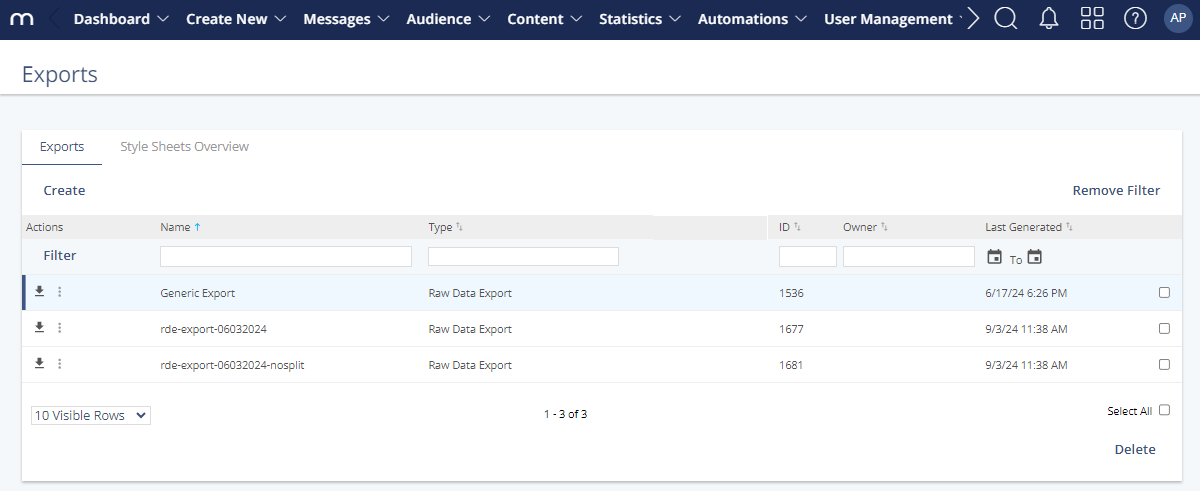- 1 Minute to read
- Print
- DarkLight
Raw Data Exports
- 1 Minute to read
- Print
- DarkLight
General Information
Raw Data Exports provide customizable access to unprocessed data, capturing detailed information about individual activities. This raw data remains unfiltered and uninterpreted.
Through a raw data export, you can track each recipient's actions, building a comprehensive profile that helps tailor future email campaigns to better meet your audience's needs.
Additionally, the granular data captured for each recipient and event can be combined with data from other channels and analyzed using external tools for deeper insights.
In contrast to Raw Data Exports, Simplified Data Exports only include the first occurrence of each selected event, offering a streamlined version of raw data exports.
Navigation
Data Management > Exports

What can I do in this window?
Export large volumes of raw data with flexible configuration options, allowing you to choose the types and amounts of data needed.
Almost any unprocessed information from Mapp Engage can be exported, including:
Geographical location
Email client
Version
Operating system
Platform
Use this data for further processing or statistical analysis in external tools.
Save your export settings for easy reuse in future exports.
To derive actionable insights from the exported raw data, you will need an external tool such as BI (Business Intelligence), CRM (Customer Relationship Management), or a data warehouse platform, as raw data alone is not immediately interpretable.
Steps
You define new exports in a user-friendly wizard. For more information, see Define a Raw Data Export.
Step | Description |
|---|---|
Defines the type, name, and description of the export. | |
Defines the time frame of the export. | |
This defines for which message event data is exported. The events included in the export are always associated with a message. | |
Defines which metric or event data is included in the export. See also Raw Data Export File. | |
Selects additional data for export, such as contact identifiers, group and message data, general information, and attribute data. The visibility of some types of data depends on your system configuration and permissions. | |
Defines the file format and settings of the export. The following settings are available: CSV, XML, and XSLT. | |
Displays an overview of the selected export data and settings. You can modify them before saving. |
Export Generation Methods
Once defined in the wizard, the export settings are stored in the system, and you can proceed with generating your export. There are two ways to do that:
Manual Generation: You can manually generate the file. For details, see Generate Exports Manually.
Scheduled Generation: Automate file generation on a regular schedule. For more information, see Generate Export (Whiteboard) or Generate Export (Automation).
